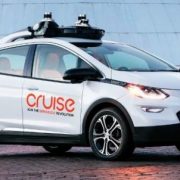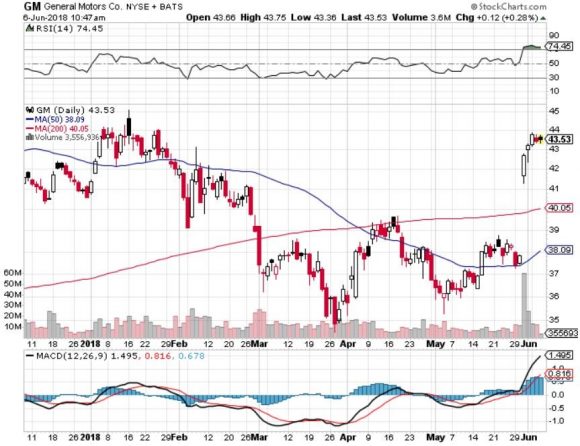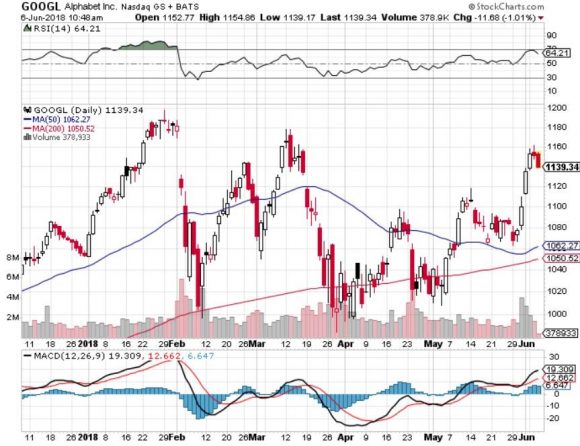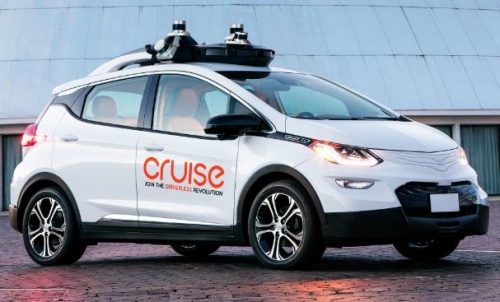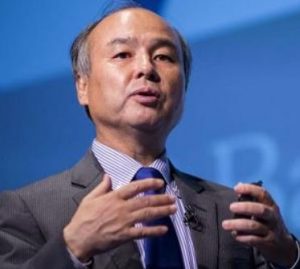Welcome to the new cutting-edge high-tech play - General Motors (GM).
The tectonic shifts permeating through the tech landscape seem like there is no end.
Another blockbuster announcement hit the airwaves melding together a brand-new partnership between SoftBank and GM's self-driving unit Cruise.
SoftBank invested an eye-popping $2.25 billion into Cruise for a 19.6% stake, adding to its scintillating arsenal of big data assets focusing on transportation including Uber, India's Ola, China's DiDi, and Southeast Asia's Grab.
GM disclosed it will divvy up a further $1.1 billion into the deal.
The Mad Hedge Technology Letter has been an astute follower of the autonomous driving technology race because the technology will be the next proprietary technology to change the world, creating enormous windfalls for the few involved.
The timeline commences later this year, when Waymo, a subsidiary of Alphabet (GOOGL), rolls out a robo-taxi commercial service.
General Motors is right on Waymo's heels rolling out its own commercial service "sometime in 2019."
This momentous investment by SoftBank solidifies (GM) as the No. 2 industry player going forward.
This is a huge victory.
The historic shift symbolizes the next gap up in the technology movement.
Tech stocks have been on a tear of late leaving other equities in the dust.
Waymo was the first mover and confidently never relinquished the top-dog position while avoiding any big disasters along the way.
The unparalleled success of Waymo's self-driving unit has led analysts to put a valuation figure ranging anywhere from $75 billion to $125 billion.
GM paid a measly $1 billion for Cruise in 2016, which is peanuts in today's thriving tech landscape.
Analysts estimated the valuation of Cruise at $4 billion just before the SoftBank investment. The almost 20% stake for $2.25 billion puts the new valuation number over $11 billion, three times more than analysts initially speculated.
Tech acquisitions have exploded in 2018 and show no signs of slowing down.
The hallmarks of Waymo's operation hinge on safety-first initiatives, which went a long way to upholding its industry leader position.
The safety-second attitude led Uber to attempt to short circuit its way to the top from a position of weakness to ill effect.
Uber's technology failed, and the result of the Phoenix, Arizona, casualty was a suspended operation.
Game over.
To stick the blade cleanly through the back, Uber CEO Dara Khosrowshahi revealed that talks are ongoing between Waymo and Uber to add Waymo's technology to Uber's broker app service.
This revelation is interesting considering Uber infuriated Waymo. It means Uber will effectively recede itself from competing with Waymo in self-driving technology.
The company doesn't need to anymore and it burns too much cash.
The protracted court ruling revealed Uber had stolen trade secrets using poached Waymo engineers.
This time, it really is the nail in the coffin for Uber's self-driving technology.
It will change strategy and refine its core app that made them famous in the first place.
The SoftBank investment into Cruise has clear synergies with Uber.
If Waymo refuses to go into bed with Uber, the natural logical step would be for the GM Cruise technology to be integrated with the Uber platform since they are both SoftBank investments.
SoftBank's management will clearly push for this arrangement. It makes no sense to use the Lyft platform with the GM Cruise division.
The tie up with GM Cruise was the catalyst for Uber seeking "talks" with Waymo, knowing very well if talks failed, a backup plan was hatched and would be able to partner up with Cruise's technology.
This is the luxury Uber has now since it is part of the SoftBank umbrella along with the GM Cruise division.
This nullifies the existential threat Uber was anxious about as it is guaranteed a certain slice of the pie leading to material future revenue stream post IPO.
The SoftBank investment is a stamp of approval for the quality of GM self-driving technology.
SoftBank only invests in the most innovative firms.
The conundrum with legacy car companies is that the bulk of revenue is reliant on selling combustion-engine cars that will soon become obsolete.
Any large commitment to R&D, unfocused on its main profits levers, hurt margins. Investors do not buy American car manufacturers that operate at a loss.
Therefore, legacy companies are penalized for spending on new businesses that could be hit or miss.
They stick with their bread and butter through thick and thin because that is what investors expect them to do. This was why Walmart (WMT) sold off when it acquired a stake in Flipkart.
A certain type of Walmart investor would be aghast at this unexpected new direction and amount of dollars drained.
In support of Walmart, CEO Doug McMillon has been positively vocal about the pivot to tech and e-commerce.
It should not be a surprise.
Old technology gets swept into the dustbin of history. Examples are legion.
Let me explain why.
The shift from horse-drawn carriages to the automobile was an equally jaw-dropping development at the time.
Not all horse-drawn carriage manufacturers were able to make the massive leap from creating simple horse-carriage passenger vehicles to automotive vehicles with combustion engines.
When Abraham Lincoln was transported to the Ford Theatre the night of his assassination, he was rolling in a Studebaker horse-drawn carriage.
Studebaker, which was established in 1852 with $68 of capital and a tool belt, was the only top-notch horse-drawn carriage manufacturer to make the gigantic shift from horse-drawn carriage builder to automotive producer.
The other players shriveled up and waved the white flag.
Studebaker actually manufactured both horse-drawn carriages and cars from 1902-1920.
The company mutated again during World War II making military vehicles, M29, M29C, and engines for B-17 bombers.
Financial mismanagement ruined the company. In 1963 it shuttered its South Bend, Indiana, factory and then went out of business by 1967, missing out on a chance to take on Uber and Waymo by about 55 years.
Such are the annals of history.
(GM) is the first American legacy car company to make the complicated transition from traditional American car producer to self-driving technology player.
And it could be the only one.
The deal will raise the price range for the Uber IPO planned for 2019. The (GM) cruise division will report financials separately from the rest of the (GM) balance sheet, which could be the precursor to spinning it out as its own company creating more shareholder value.
No matter how you dice this up, (GM) is the real deal. Investors voted with their feet causing the stock to explode skyward closing 13% higher on the news of the investment.
Buy (GM) on the next sell-off instead of chasing the bolted stallion out of the starting gate.
_________________________________________________________________________________________________
Quote of the Day
"Indian software engineers are the best in the world; even in Silicon Valley, the best software engineers are Indians," - said CEO of Softbank Masayoshi Son

